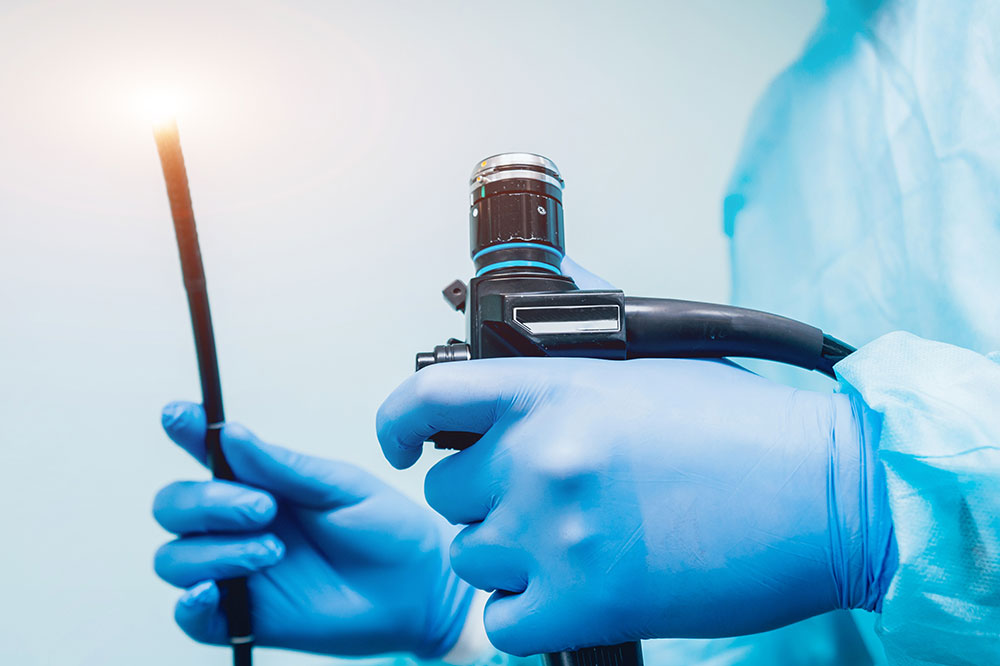
Colonoscopy – What it is, how to prepare for one, costs, and more
The colon and rectum portions of the large intestine are examined visually using an endoscope during a colonoscopy. It aids in the diagnosis of intestinal anomalies, including colorectal cancer. Colonoscopies are usually not uncomfortable. After the procedure, there may be some pain in the rectum or stomach and some bloating. Yearly, more than 15 million colonoscopies are performed in the country. A physician may also obtain a tissue sample or extract aberrant cells for biopsy.
What it is
Doctors perform a colonoscopy to examine the parts of the large intestine, especially the colon, for irregularities or diseases. A small, flexible tube called a colonoscope with a tiny camera attached is used for this purpose. The endoscopic device is inserted into the anus and then gradually moved to the end of the colon, recording the internal of the intestine. There are two types of colonoscopies:
- Screening colonoscopy: It is a screening test used to examine the intestine to ensure the organ is healthy.
- Diagnostic colonoscopy: A diagnostic colonoscopy is conducted for an individual showing certain symptoms or having a family history of colon cancer.
Preparing for colonoscopy
Before a colonoscopy, the patient might need to follow certain guidelines. Individuals undergoing a colonoscopy are often instructed to completely avoid solid foods. Additionally, they are instructed to consume laxatives.
Procedure
A colonoscopy involves the insertion of a colonoscope, a tubular instrument with a diameter of approximately half an inch, into the colon. During the procedure, the doctor will pump carbon dioxide or water into the intestine through the colonoscope tube. This inflates the colon, which helps the physician have a better view of the region. The scope can be maneuvered around the contours of the colon because of its flexibility. Periodically, you might be asked to move to make room for the physician to move the scope. The video camera at the end of the colonoscope takes images of the colon’s lining and sends them to an external monitor. The healthcare provider checks the screen to find any unusual lesions.
During the procedure, you may feel some cramps. You can lessen the feeling by taking many slow, deep breaths during the test. The colonoscope is removed after carefully inspecting the inner layer of your bowel.
The whole procedure takes 30 minutes to an hour to complete.
Post-procedure
The patient will be asked to devote the first hour in the medical facility to recover after the test. This is advised to give the person enough time to get back to their senses after the anesthetic effects wear off. The medical team will keep an eye out for any indicators of difficulties and continue to check the patient’s vital signs. The doctor will review the test reports, and any findings made during the examination will be shared with the individual once he awakens.
After getting home, the person should take a stroll to relieve the discomfort caused by bloating from the gas pumped into the intestine. In addition, the individual may notice blood in the feces during the first bowel emptying after the treatment.
Colonoscopy outcomes
The test report will have the impressions made by the doctor regarding the condition of the large intestine. The interpretation of the possible outcomes of a colonoscopy is mentioned below:
- Normal discoveries: This indicates that no anomalies were found. If the likelihood of colorectal cancer is average, the physician will probably advise scheduling the subsequent screening in ten years.
- Intestinal polyps: Polyps are flat or stalked growth in the colon lining. These may be cancerous or benign. While larger polyps could need surgical intervention, tiny ones are frequently eliminated by the body itself. Having a polyp history may call for different types of other tests. Other undesirable outcomes include inflammation, inflammatory bowel disorder, diverticular disease, and hemorrhoids.
When to get a colonoscopy
One can get a colonoscopy as a precautionary examination. The doctor may recommend the test to check for certain intestinal conditions if a patient has a family history of colon cancer, polyps, or complains of symptoms like the following:
- Anemia
- Recurrent abdominal pain
- Blood in the feces or bleeding from the rectum
- Changes in bowel habits that continues for many days
Reasons to get a colonoscopy done
A colonoscopy is done for the following reasons:
- A colonoscopy helps check for colon conditions related to the intestinal signs and symptoms shown by a patient.
- It helps detect colon cancer in individuals who are over the age of 45 and have a family history of the condition.
- It detects polyps.
- It helps diagnose certain intestinal conditions, such as ulcerative colitis and Chron’s disease.
Cost
The cost of colonoscopy in the country ranges between $ 1250 and $ 2800.




